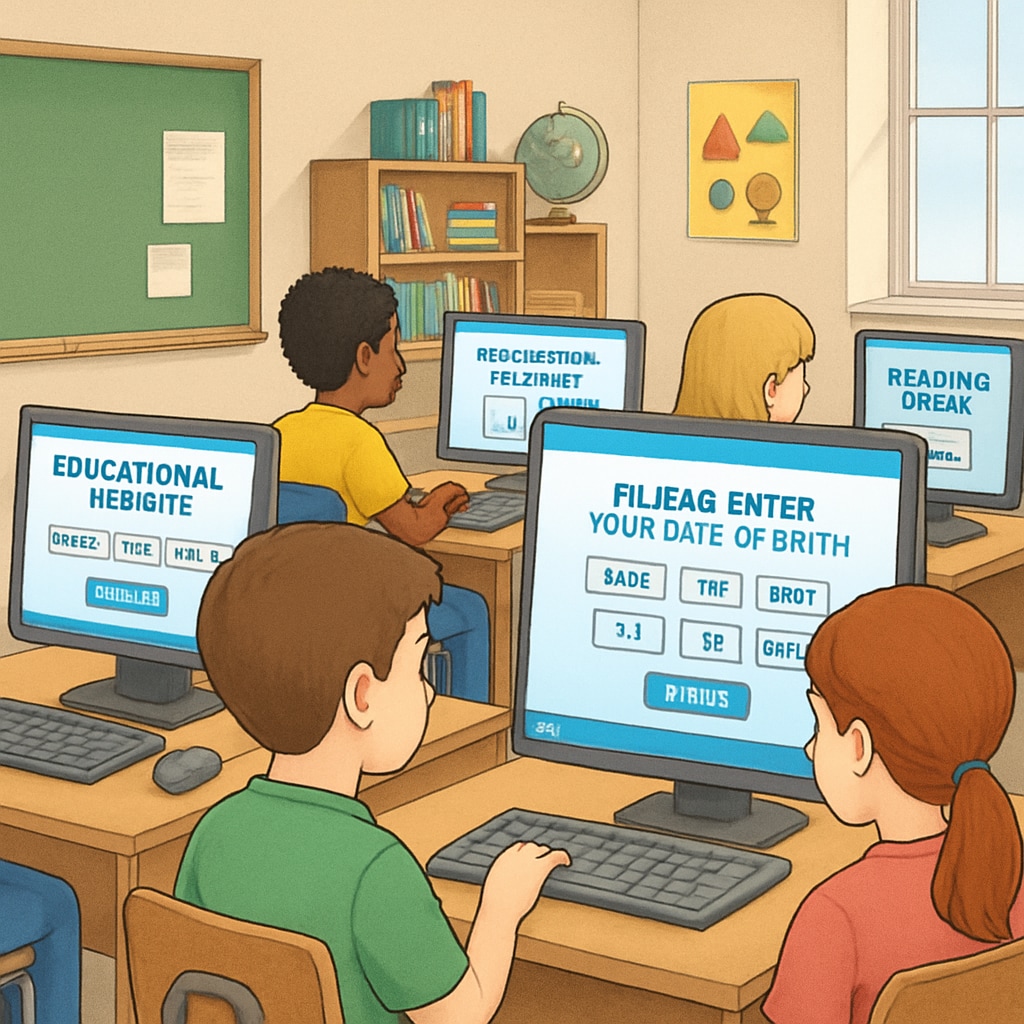Recent state-level internet censorship laws, including age verification and content restrictions, are reshaping how students access educational resources. These regulations, implemented in states such as South Dakota and Wyoming, aim to shield minors from harmful online content. However, they also unintentionally create barriers to accessing crucial learning materials, including classic literature, art, and digital educational tools. While protecting young users is vital, such measures risk placing significant limitations on K12 education in the digital age.
Age Verification Laws: A Double-Edged Sword
Age verification requirements are becoming increasingly stringent across various U.S. states. Platforms hosting educational materials and artistic works are often required to implement robust systems to verify users’ ages. Although these policies were introduced with the intention of safeguarding minors, they frequently result in unintended consequences for educational institutions. For example, digital libraries and online art repositories often face challenges navigating these regulations, leading to restricted access for students who need these resources for schoolwork.

Furthermore, many educators have reported difficulties in incorporating certain materials into their lessons due to regional restrictions. Classic novels that explore complex themes, important historical documents, and even informative videos can be flagged as inappropriate, effectively cutting off access to vital learning tools.
The Risk of Over-Censorship in K12 Education
Internet censorship at the state level often casts a wide net, inadvertently restricting access to content that is perfectly appropriate for educational use. For instance, websites hosting literary analyses, historical archives, or digital art collections might be blocked due to overly broad algorithms or stringent content filters. As a result, K12 students are deprived of opportunities to explore diverse perspectives and engage with materials that enrich their understanding of the world.

Over-censorship also impacts teachers, who are forced to redesign curriculums and find alternative resources that comply with local regulations. The restricted access can hinder students’ ability to develop critical thinking skills, as they are unable to engage with nuanced and complex content. For example, discussions around controversial historical events or diverse cultural expressions may be stifled, limiting the depth of classroom conversations.
Striking a Balance Between Protection and Accessibility
While protecting minors from explicit or harmful content online is undoubtedly important, policymakers must consider the broader implications of their censorship strategies. A balanced approach is crucial to ensure that students can access educational materials without exposure to inappropriate content. Collaboration between educators, lawmakers, and digital platforms could help address these issues by creating nuanced policies tailored to educational needs.
Possible solutions include:
- Developing filters specifically designed for educational content rather than applying blanket restrictions.
- Involving educators in the policymaking process to identify essential materials that should remain accessible.
- Providing exemptions for accredited educational institutions to access otherwise restricted content.
As a result, students could gain access to a wide array of academic resources while still benefiting from safeguards against harmful materials.
Conclusion: The Future of Digital Learning
State-level internet censorship laws, including age verification requirements, have created unintended challenges for K12 education. While these regulations aim to protect minors, they often restrict access to critical educational tools, classic literature, and artistic works. To ensure the growth and development of the next generation, policymakers must strike a careful balance between protection and accessibility. By doing so, they can prevent the formation of digital barriers while fostering an environment where students can thrive academically.
Readability guidance: The article uses concise paragraphs, avoids excessive jargon, and incorporates lists to summarize key points. Over-censorship risks and solutions are clearly outlined, enhancing the article’s clarity and impact.


